

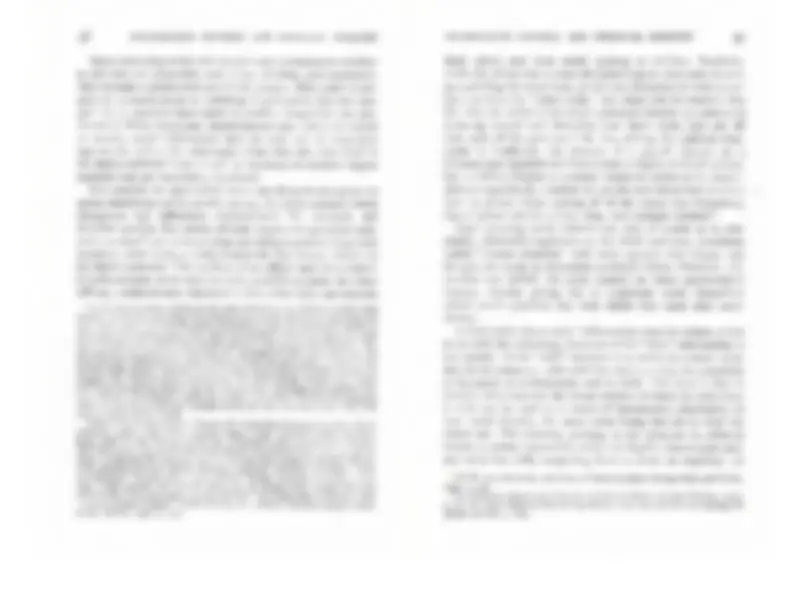


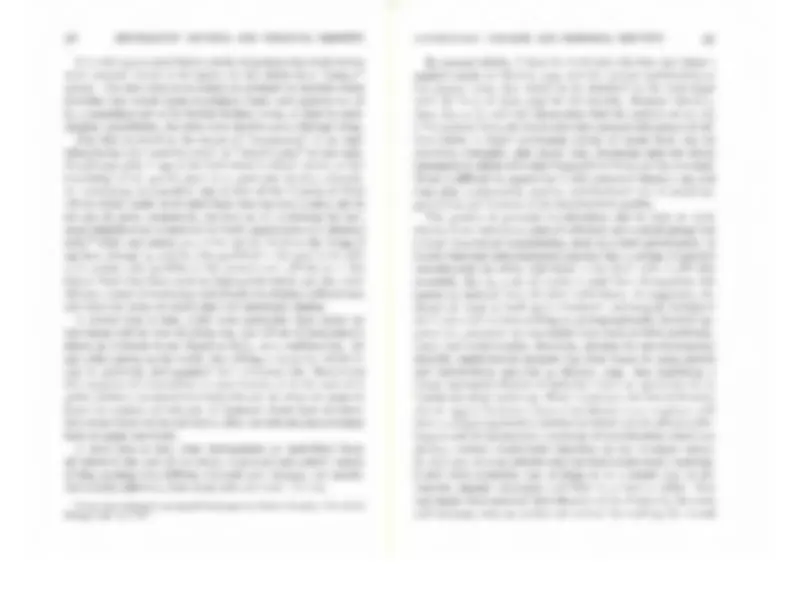
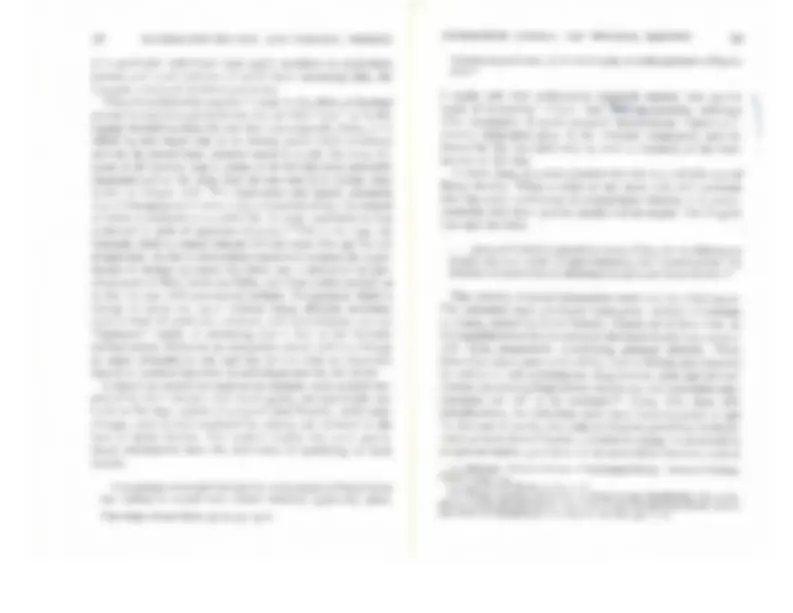

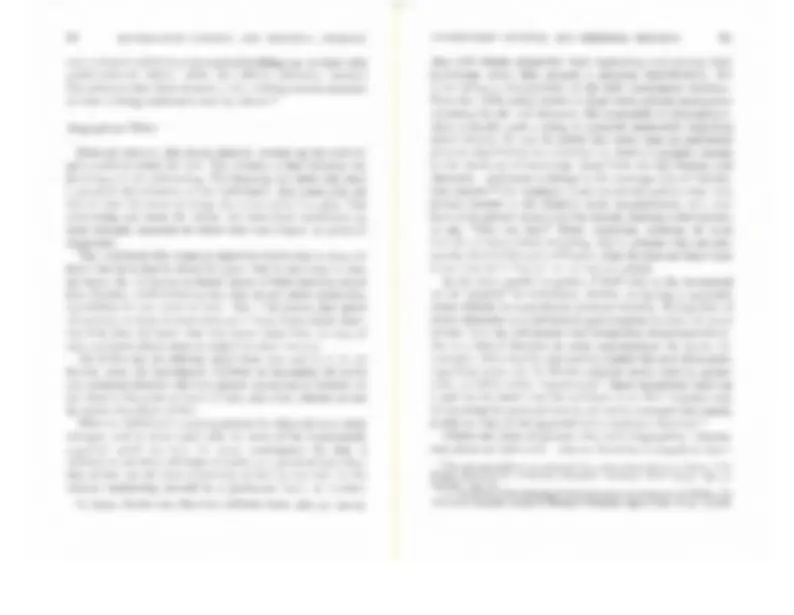
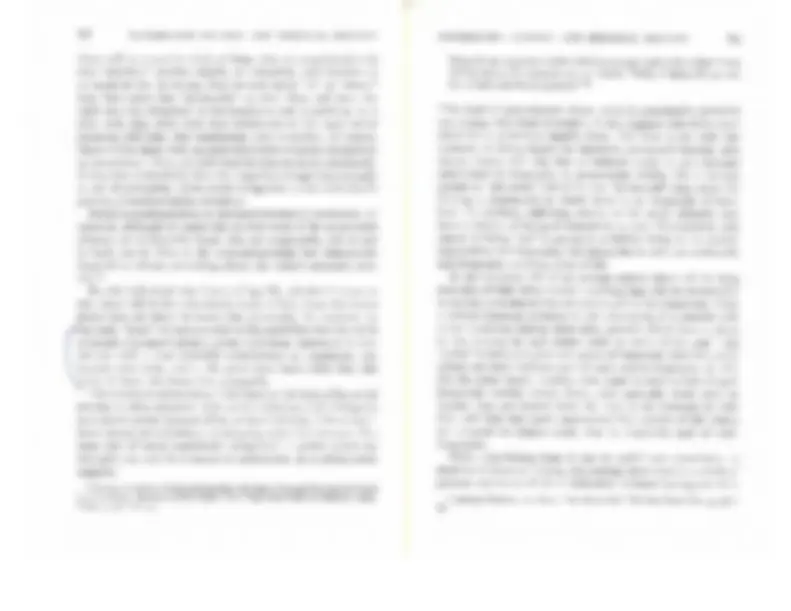


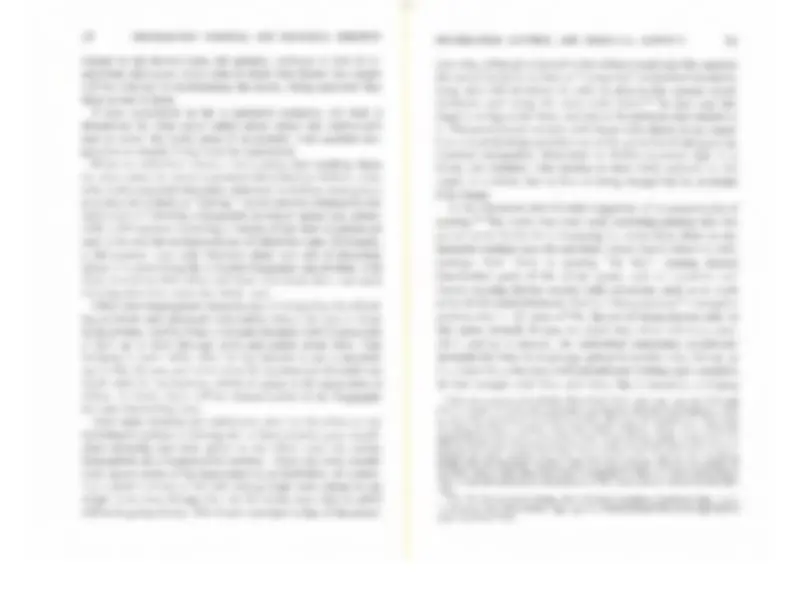








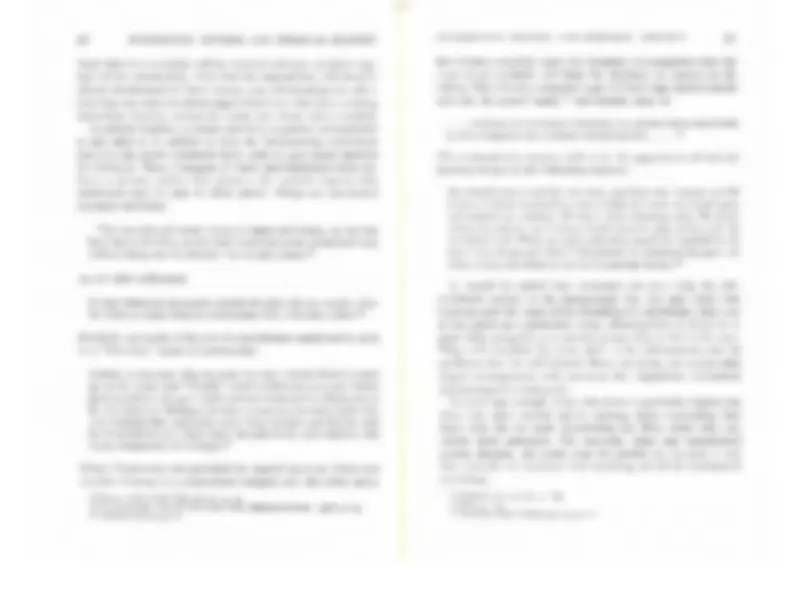
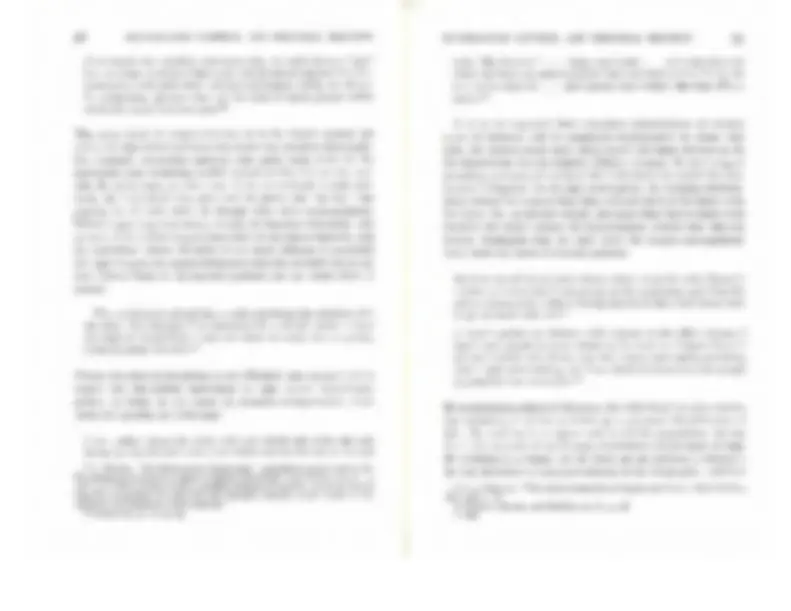
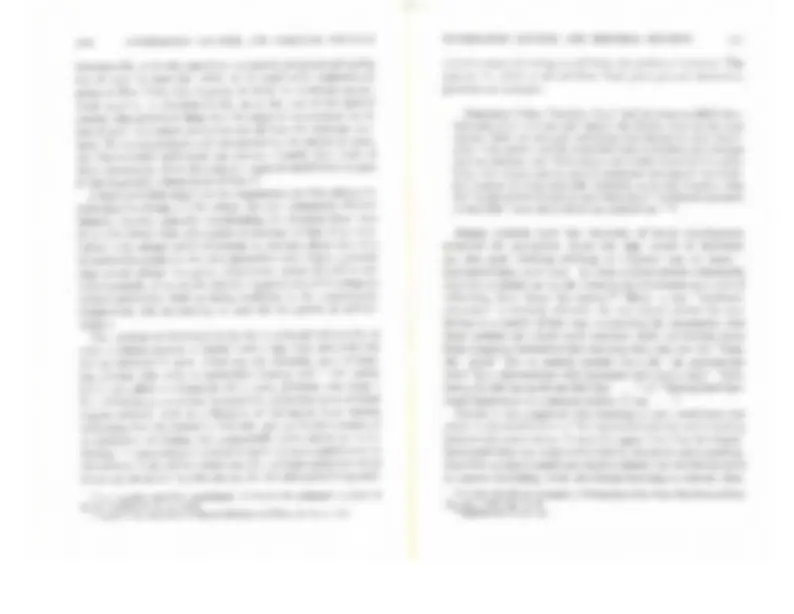

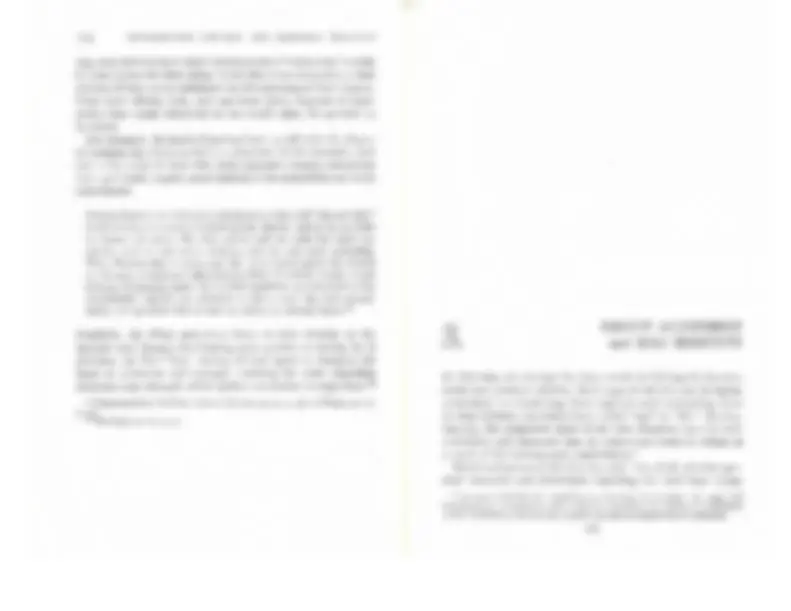


Study with the several resources on Docsity

Earn points by helping other students or get them with a premium plan


Prepare for your exams
Study with the several resources on Docsity

Earn points to download
Earn points by helping other students or get them with a premium plan
Community
Ask the community for help and clear up your study doubts
Discover the best universities in your country according to Docsity users
Free resources
Download our free guides on studying techniques, anxiety management strategies, and thesis advice from Docsity tutors
Note that in this discussion of prestige symbols, stigma symbols, and disidentifiers, signs have been considered which routinely convey social information.
Typology: Exams
1 / 33

This page cannot be seen from the preview
Don't miss anything!


























to fight my own battles of identification, it would be the incidents that made me realize with my heart that cripples could be identified with characteristics other than their physical handicap. I managed to see that cripples could be comely, charming, ugly, lovely, stupid, brilliant-just like all other people, and I discovered that I was able to hate or love a cripple in spite of his handicap.f"
It may be added that in looking back to the occasion of discover- ing that persons with his stigma are human beings like everyone else, the individual may bring to bear a later occasion when his pre-stigma friends imputed un-humanness to those he had by then learned to see as full-fledged persons like himself. Thus, in reviewing her experience as a circus worker, a young girl sees first that she had learned her fellow-workers are not freaks, and second that her pre-circus friends fear for her having to travel in a bus along with other members of the troupe." Another turning point-retrospectively if not originally-is the isolating, incapacitating experience, often a period of hos- pitalization, which comes later to be seen as the time when the individual was able to think through his problem, learn about himself, sort out his situation, and arrive at a new understanding of what is important and worth seeking in life. It should be added that not only are personal experiences retrospectively identified as turning points, but experiences once removed may be employed in this way. For example, a reading of the literature of the group may itself provide an experience felt and claimed as reorganizing:
When there is a discrepancy between an individual's actual
be known to us before we normals contact hi,m, or to be quite evident when he presents himself before us. He is a discredited person, and it is mainly he I have been de.iling withuntil now. As suggested,we are likely to give no open recognition to what is discrediting of him, and while this work of careful disattention is being done, the situation can become tense, uncertain, and ambiguous for all participants, especially the stigmatized one. The cooperation of a stigmatized person with normals in act- 41
I do not think it is claiming too much to say that Uncle Tom's Cabin was a fair and truthful panorama of slavery; however that may be, it opened my eyes as to who and what I was and what my country considered me; in fact, it gave me my bearing.V 80 Carling, op. cit., p. 2 I. 81 C. Clausen, I Love You Honey But the Season's Over (New York: Holt, Rinehart & Winston, 1961), p. 217. 82 Johnson, op. cit., p. 42. Johnson's novel, like others of its kind, provides a nice instance of myth-making, being a literary organization of many of the crucial moral experiences and crucial turning points retrospectively available to those in a stig- matized category.
(
ing as if his known differentness were irrelevant and not at- tended to is one main possibility in the life of such a person. However, when his differentness is not immediately apparent, and is not known beforehand (or atkast known by hi to be known to the others), when in fact his is a iscre ltable not a discredited, person, then the second main possibility in his life is to be found. The issue is not that of managing tension gen- erated during social contacts, but rather that of managing in- formation about his failing. To display or not to display; to tell or not to tell; to let on or not to let on; to lie or not to lie; and in each case, to whom, how, when, and where. For example, while the mental patient is in the hospital, and when he is with adult members of his own family, he is faced with being treated tactfully as if he were sane when there is known to be some doubt, even though he may not have any; or he is treated as insane, when he knows this is not just. But for the ex-mental patient the problem can be quite different; it is not that he must face prejudice against himself, but rather that he must face un- witting acceptance of himself by individuals who are prejudiced against persons of the kind he can be revealed to be. Wherever he goes his behavior will falsely confirm for the other that they are in the company of what in effect they demand but may dis- cover they haven't obtained, namely, a mentally untainted per- son like themselves. By intention or in effect the ex-mental patient conceals information about his real social identity, re- ceiving and accepting treatment based on false suppositions concerning himself. It is this second general issue, the manage- ment of undisclosed discrediting information about self, that I am focusing on in these notes, in brief, "passing." The conceal- ment of creditable facts-reverse passing-of course occurs, but is not relevant here.'
1 For one instance of reverse passing, see "H. E. R. Cules," "Ghost-Writer and Failure," in P. Toynbee, ed., Underdogs (London: Weidenfeld and Nicolson, 1961), Chap. 2, pp. 30-39. There are many other examples. I knew a physician who was careful to refrain from using external symbolsof her status, such as car-license tags, her only evidence of professionbeing an identification carried in her wallet. When faced with a public accident in which medical service was already being rendered
The information of most relevance in the study of stigma has certain properties. It is information about an individual. It is about his more or less abiding characteristics, as opposed to the moods, feelings, or intents that he might have at a particular moment.? The information, as well as the sign through which it is conveyed, is reflexive and embodied; that is, it is conveyed by the very person it is about, and conveyed through bodily ex- pression in the immediate presence of those who receive the expression. Information possessing all of these properties I will here call "social." Some signs that convey social information may be frequently arid steadily available, and routinely sought and received; these signs may be called "symbols." The social information conveyed by any particular symbol may merely confirm what other signs tell us about the indi- vidual, filling out our image of him in a redundant and un- problematic way. Some lapel buttons, attesting to social club membership, are examples, as are male wedding rings in some contexts. However, the social information conveyed by a symbol can establish a special claim to prestige, honor, or desirable class position-a claim that might not otherwise be presented or, if otherwise presented, then not automatically granted. Such a sign is popularly called a "status symbol," although the term "prestige symbol" might be more accurate, the former term being more suitably employed when a well-organized social position of some kind is the referent. Prestige symbols can be contrasted to stigma symbols, namely, signs which are especially effective in drawing attention to a debasing identity discrep- the victim, or in which the victim was past helping, she would, upon examining the victim at a distance from the circle around him, quietly go her way without an- nouncing her competence. In these situations she was what might be called a female impersonator. Z The difference between mood information and other kinds of information is treated.in G. Stone, "Appearance and the Self," in A. Rose, Human Behavior and Social Processes (Boston:Houghton Miffiin, 1962), pp. 86-118. See also E. Goffman, The Presentationof Self in Everyday Life (New York: Doubleday & Co., Anchor Books, 1959),pp. 24-25.
Signs conveying social information vary according to whether or not they are congenital, and, if not, whether, once employed, they become a permanent part of the person. (Skin color is con- genital; a brand mark or maiming is permanent but not con- genital; a convict's head-shave is neither congenital nor per- manent.) More important, impermanent signs solely employed to convey social information mayor may not be employed against the will of the informant; when they are, they tend to be stigma symbols." Later it will be necessary to consider stigma symbols that are voluntarily employed. It is possible for signs which mean one thing to one group to mean something else to another group, the same category being designated but differently characterized. For example, the shoulder patches that prison officials require escape-prone pris- oners to wear-" can come to mean one thing to guards, in general negative, while being a mark of pride for the wearer relative to his fellow prisoners. The uniform of an officer may be a matter of pride to some, to be worn on every possible occasion; for other officers, weekends may represent a time when they can exercise
their choice and wear mufti, passing as civilians. Similarly, while the obligation to wear the school cap in town may be seen as a privilege by some boys, as will the obligation to wear a uni- form on leave by "other ranks," still there will be wearers who feel that the social information conveyed thereby is a means of ensuring control and discipline over them when they are off duty and off the premises.!' So, too, during the eighteen hun- dreds in California, the absence of a pigtail (queue) on a Chinese man signified for Occidentals a degree of acculturation, but to fellow-Chinese a question would be raised as to respect- ability-specifically, whether or not the individual had served a term in prison where cutting off of the queue was obligatory; loss of queue was for a time, then, very strongly resisted." Signs carrying social information vary of course as to reli- ability. Distended capillaries on the cheek and nose, sometimes called "venous stigmata" with more aptness than meant, can be and are taken as indicating alcoholic excess. However, tee- totalers can exhibit the same symbol for other physiological reasons, thereby giving rise to suspicions about themselves which aren't justified, but with which they must deal none- theless. A final point about social information must be raised; it has to do with the informing character of the "with" relationship in our society. To be "with" someone is to arrive at a social occa- sion in his company, walk with him down a street, be a member of his party in a restaurant, and so forth. The issue is that in certain circumstances the social identity of those an individual is with can be used as a source of information concerning his own social identity, the assumption being that he is what the others are. The extreme, perhaps, is the situation in criminal circles: a person wanted for arrest can legally contaminate any- one he is seen with, subjecting them to arrest on suspicion. (A II T. H. Pear, Personality,Appearanceand Speech (London: George Allen and Unwin, 1957), p. 58. 12 A. McLeod, Pigtails and Gold Dust (Caldwell, Idaho: Caxton Printers, 1947), p. 28. At times religious-historical significance was also attached to wearing the queue; see ibid., p. 204.
person for whom there is a warrant is therefore said "to have smallpox," and his criminal disease is said to be "catching.")
they convey about themselves will have to consider how they deal with the contingencies of being seen "with" particular others.
however, it must be distinguished from three other notions that are often confused with it. First, the visibility of a stigma must be distinguished from its "known-about-ness." When an individual's stigma is very visible, his merely contacting others will cause his stigma to be known about. But whether others know about the individual's stigma will depend on another factor in addition to its current visibility, namely, whether or not they have previous knowledge about him-and this can be based on gossip about him or a previous contact with him during which his stigma was visible. Secondly, visibility must be distinguished from one of its par- ticular bases, namely, obtrusiveness. When a stigma is immedi- ately perceivable, the issue still remains as to how much it interferes with the flow of interaction. For example, at a busi- ness meeting a participant in a wheelchair is certainly seen to be in a wheelchair, but around the conference table his failing can become relatively easy to disattend. On the other hand, a par- ticipant with a speech impediment, who in many ways is much less handicapped than someone in a wheelchair, can hardly open his mouth without destroying any unconcern that may have arisen concerning his failing, and he will continue to intro- duce uneasiness each time thereafter that he speaks. The very mechanics of spoken encounters constantly redirect attention to the defect, constantly making demands for clear and rapid messagesthat must constantly be defaulted. It may be added that the same failing can have different expressions, each with a dif- ferent degree of obtrusiveness. For example, a blind person with a white cane gives quite visible evidence that he is blind; but this stigma symbol, once noted, can sometimes be disattended, along with what it signifies. But the blind person's failure to direct his face to the eyes of his co-participants is an event that repeatedly violates communication etiquette and repeatedly dis- rupts the feed-back mechanics of spoken interaction. Thirdly, the visibility of a stigma (as well as its obtrusiveness) must be disentangled from certain possibilities of what can be called its "perceived focus." We normals develop conceptions,
(
Traditionally, the question of passing has raised the issue of the "visibility" of a particular stigma, that is, how well or how badly the stigma is adapted to provide means of communicating that the individual possessesit. For example, ex-mental patients and expectant unmarried fathers are similar in that their failing is not readily visible; the blind, however, are easily seen. Vis- ibility, of course, is a crucial factor. That which can be told about an individual's social identity at all times during his daily round and by all persons he encounters therein will be of great importance to him. The consequence of a presentation that is perforce made to the public at large may be small in particular contacts, but in every contact there will be some consequences, which, taken together, can be immense. Further, routinely avail- able information about him is the base from which he must begin when deciding what tack to take in regard to whatever stigma he possesses.Thus, any change in the way the individual must always and everywhere present himself will for these very reasons be fateful-this presumably providing the Greeks with the idea of stigma in the first place. Since it is through our sense of sight that the stigma of others most frequently becomes evident, the term visibility is perhaps not too misleading. Actually, the more general term, "Rercept- i~" would be more accurate, and "evidentness" mor~- rate still. A stammer, after all, is a very "visible" defect, but in the first instance because of sound, not sight. Before the concept of visibility can be safely used even in this corrected version, 13 See D. Maurer, The Big Con (New York: Pocket Books, 1949), p. 298.
There are now barbershops where I am received with some of the calmness of old, of course, and hotels, restaurants, and public build- ings which I can enter without engendering a feeling that something is going to happen; a few trolley motormen and bus drivers now merely wish me Good Morning when I get on with my dog, and a few waiters I know serve me with traditional unconcern. Naturally, the immediate circle of my family has long since ceased doing any unnecessary worrying about me, and so have most of my intimate friends. To that extent I have made a dent in the education of the world.'?
familiarity, one must go on to see that familiarity need not reduce conternpt.P For example, normals who live adjacent to settle- ments of the tribally stigmatized often manage quite handily to sustain their prejudices. It is more important here, however, to see that the various consequences of making a whole array of virtual assumptions about an individual are clearly present in our dealings with persons with whom we have had a long- standing, intimate, exclusive relationship. In our society, to speak of a woman as one's wife is to place this person in a cate- gory of which there can be only one current member, yet a cate- gory is nonetheless involved, and she is merely a member of it; Unique, historically entangled features are likely to tint the edges of our relation to this person; still, at the center is a full array of socially standardized anticipations that we have regarding her conduct and nature as an instance of the category "wife," for example, that she will look after the house, entertain our friends, and be able to bear children. She will be a good or a bad wife, and be this relative to standard expectations, ones that other husbands in our group have about their wives too. (Surely it is scandalous to speak of marriage as a particularistic relation- ship.) Thus, whether we interact with strangers or intimates, we will find that the finger tips of society have reached bluntly into the contact, even here putting us in our place. There are sure to be cases where those who are not required to share the individual's stigma or spend much time exerting tact and care in regard to it may find it easier to accept him, just because of this, than do those who are obliged to be in full- time contact with him. When one moves from a consideration of discredited persons to discreditable ones, much additional evidence is found that the individual's intimates as well as his strangers will be put off by his stigma. For one thing, the individual's intimates can be- come just the persons from whom he is most concerned with
. 19 For evidence that normal children at a summer camp do not come with time to accept physically handicapped fellow-members more readily, see Richardson, op, cit., p. 7.
example, it has been shown that in addition to techniques for handling strangers, the physically handicapped may develop special techniques for moving past the initial tactfulness and distance they are likely to receive; they may attempt to move on to a more "personal" plane where in fact their defect will cease to be a crucial'factor+-an arduous process Fred Davis calls "breaking through." 16 Further, those with a bodily stigma re- port that, within certain limits, normals with whom they have repeated dealings will gradually come to be less put off by the disability, so that something like a daily round of normalization may hopefully develop. A blind person's round may be cited:
The same sheltering can presumably occur in regard to whole categories of the stIgmatized: the service shops which are some- times found in the immediate neighborhood of mental hospitals may become places with high tolerance for psychotic behavior; the neighborhoods around some medical hospitals develop a ca- pacity for calm treatment of the facially disfigured who are undergoing skin grafting; the town in which a seeing-eye school is located learns to countenance blind students engaged in the act of holding a harness attached to a human instructor all the while offering him periodic words of canine encouragement.l" In spite of this evidence for everyday beliefs about stigma and 16 Davis, op, cit., pp. 127-128. 17 Chevigny, op. cit., pp. 75-76. 18 Keitlen, op, cit., p. 85.
--
concealing something shameful; the situation of homosexuals provides an illustration:
does not seem to disqualify a man from embarking upon mar- riage, one student suggests that:
Although it is usual for a homosexual to protest that his deviation is not a disease, it is noteworthy that if he consults anyone at all, it is more likely to be a doctor than anyone else. But it is not likely to be his own family doctor. Most of the contacts were anxious to keep their homosexuality hidden from their family. Even some of those who behave fairly openly in public are most careful to avoid arousing suspicions in the family circle. 20
It is also possible that the circumstances of courtship or the pattern of the drinking may so lower the VIsibilityof alcoholism that it is not a factor in mate selection. The more intimate interaction of marriage may then bring out the problem in a form recognizable to the spouse."
In interpreting the father's illness to younger children, almost all the mothers attempt to follow a course of concealment. The child is told either that his father is in a hospital (without further explana- tion) or that he is in the hospital suffering from a physical ailment (he has a toothache, or trouble with his leg, or a tummy ache, or a headache). 21 [Wife of mental patient] "1 live in a horror-a perfect horror-that some people will make a crack about it to Jim (child) .... " 22
Moreover, intimates can come to playa special role in the dis- creditable person's management of social situations, so that even where their acceptance of him is not influenced by his stigma, their duties will be. Instead, then, of thinking of a continuum of relationships, with categoric and concealing treatment at one end and par- ticularistic, open treatment at the other, it might be better to think of various structures in which contact occurs and is sta- bilized-public streets and their strangers, perfunctory service relations, the workplace, the neighborhood, the domestic scene- and to see that in each case characteristic discrepancies are likely to occur between virtual and actual social identity, and characteristic efforts are made to manage the situation. And yet, the whole problem of managing stigma is influenced by the issue of whether or not the stigmatized person is known to us personally. To attempt to describe just what this influence is, however, requires the clear formulation of an additional con- cept, personal identity. 23 E. Lemert, "The Occurrence and Sequence of Events in the Adjustment of Families to Alcoholism," Quarterly Journal of Studies on Alcohol, XXI (1960), 683. 24 A distinction between personal identity and role identity is presented clearly in R. Sommer, H. Osmond, and L. Pancyr, "Problems of Recognition and Iden- tity," International Journal of Parapsychology, II (1960), 99-119, where the problem is posed as to how one establisheseither or disproveseither. See also Goffman, The Presentationof Self in Everyday Life, op. cit., p. 60. The idea of personal identity is also used by C. Rolph, Personal Identity (London: Michael Joseph, 1957), and by E. Schachtel, "On Alienated Concepts of Identity," American Journal of Psychoanalysis, XXI (1961), 120-121,under the title, "paper identity." The concept of legal or jural identity correspondscloselyto personal identity except that (as Harvey Sacks has informedme) there are somesituations,as in adoptions,where the legal identity of an individual may be changed.
Further, while one parent in a family may share a dark secret about, and with, the other, the children of the house may be considered not only unsafe receptacles for the information but also of such tender nature as to be seriously damaged by the knowledge. The case of the mentally hospitalized parent is an example:
One may add that there are some stigmas that are so easily con- cealed that they figure very little in the individual's relation to strangers and mere acquaintances, having their effect chiefly upon intimates-frigidity, impotence, and sterility being good examples. Thus, in trying to account for the fact that alcoholism 2Q G. Westwood, A Minority (London: Longmans, Green & Company, 1960), P·40. 21 M. R. Yarrow, J. A. Clausen, and P. R. Robbins, "The Social Meaning of Mental Illness," Journal of Social Issues, XI (1955),40-41.This paper providesmuch useful material on stigma management. 22 Ibid., p. 34.
of a particular individual more easily available to authorized persons and more inclusive of social facts concerning him, for example, receipt of dividend payments. There is considerable popular interest in the efforts of harried persons to acquire a personal identity not their "own" or to dis- engage themselves from the one that was originally theirs, as in efforts to scar finger tips or to destroy public birth certificate records. In actual cases, personal name is usually the issue, be- cause of all identity pegs it seems to be the one most generally employed and at the same time the one that is in certain ways easiest to tamper with. The respectable and legally advisable way of changing one's name is by a documented act, the record of which is available in a public file. A single continuity is thus preserved in spite of apparent diversity;" This is the case, for example, when a woman changes her last name through the act of marriage. In the entertainment world it is common for a per- former to change his name, but here, too, a record of the pre- vious name is likely to be available, and even widely known, as is also the case with pen-named authors. Occupations where a change in name can occur without being officially recorded, such as those of prostitute, criminal, and revolutionary, are not "legitimate" trades. A remaining case is that of the Catholic clerical orders. Wherever an occupation carries with it a change in name, recorded or not, one can be sure that an important breach is involved between the individual and his old world. It should be stated that some name changes, such as those em- ployed by draft dodgers and motel guests, are specifically ori- ented to the legal aspects of personal identification, while other changes, such as ones employed by ethnics, are oriented to the issue of social identity. One student implies that some profes- sional entertainers have the distinction of qualifying on both counts:
The average chorus girl changes her name almost as frequently as her coiffure to accord with current theatrical popularity, show- 26 See Rolph, PersonalIdentity, op, cit., pp. 14-16.
--
business superstitions, or, in some cases, to avoid payment of Equity dues. 27
I might add that professional criminals employ two special 1 types of re-naming: aliases, used ~porarily, although often repeatedly, to avoid personal identification; "monikers," namely, nicknames given in the criminal community and re- tained for life, but used only by and to members of the com- I munity or the wise. A name, then, is a very common but not very reliable way of fixing identity. When a court of law must deal with someone who has every motivation to misrepresent himself, it is under- standable that other positive marks will be sought. The English case may be cited:
... personal identity is proved in courts of law, not by reference to names, not even mainly by direct testimony, but "presumptively" by evidence of similarities or differences in personal characteristics. 28
The question of social information must now be raised again. The embodied signs previously considered, whether of prestige or stigma, pertain to social identity. Clearly all of these must be distinguished from the documentation that individuals carry around with them purportedly establishing personal identity. These documents have come to be widely used in Britain and America by natives as well as foreigners. Registration cards and drivers' licenses (containing fingerprints, signatures, and sometimes pho- tographs) are felt to be necessary.P Along with these self- identifications, the individual may carry documentation of age (in the case of youths who wish to frequent gambling establish- ments or to be served liquor), a license to engage in protected or dangerous trades, permission to be away from barracks, and so 27 A. Hartman, "Criminal Aliases: A Psychological Study," Journal of Psychology, XXXII (195I), 53. 28 Rolph, Personal Identity, op. cit., p. 18. 29 In Britain, currently, citizens are not obliged to carry identification documents, although aliens and motorists are; also, under certain circumstances, British citizens can decline to tell policemen who they are. See ibid., pp. 12-13.
forth. This information is often supplemented by family pictures, evidence of past military service, and even photostatic copies of college certificates. Recently, information about the bearer's medical status has also appeared, and its general use advocated:
Medicalidentity cardsfor all are beingconsideredby the Ministry of Health. Peoplewould be askedto carry them always. The card would contain details such as vaccinations, owner's blood group, and of any disease,such as hemophilia,that shouldbe knownimmediatelyif the person is involvedin an accident. One of the aims is to help quick treatment in an emergencyand to avoid the dangers of injectingpeople with vaccineto which they might be allergic."
It may be added that there appears to be an increasing number of work establishments which require the individual to wear, and if not wear then possess on person, employee identification cards with photographs. The whole point of these various identification devices is, of course, that they allow no innocent error or ambiguity, trans- forming what would be merely a questionable use of socially informing symbols into clear-cut forgery or illegal possession; therefore the term identity document might be more accurate than identity symbol. (Compare, for example, the relatively loose basis for identification of Jewish identity through appear- ance, gesture, and voice.)!' Incidentally, this documentation and the social facts attached thereto are often presented only in special situations to those specially authorized to check up on identity, unlike prestige and stigma symbols, which are more likely to be available to the public at large. Because information about personal identity often is of the kind that can be strictly documented, it can be used to safe- guard against potential misrepresentation of social identity. 30 Reported in The San FranciscoChronicle, April 14, 1963, and attributed to The London Times. 31 L. Savitz and R. Tomasson, "The Identifiability of Jews," American Journal of Sociology, LXIV (1959), 468-475.
Thus, army personnel may be required to carry identity docu- ments validating the potentially false claims of their uniform and its insignia. The student's personal identification card assures the librarian that he is vested with the right to borrow library books or to enter the stacks, just as his driver's license can attest that he is of legal age for drinking in commercial establishments. So, too, credit cards attest on the surface to personal identity, useful in deciding whether to give or to with- hold credit, but in addition attest to the individual's being of a social category to warrant such accrediting. A man proves he is Dr. Hiram Smith to prove he is a doctor, perhaps rarely showing he is a doctor to prove he is Hiram Smith. Similarly, individuals excluded from some hotels on the basis of their ethnicity may have been ethnically identified through their names, so that here, too, an item of personal biography is exploited for cate- goric reasons. In general, then, biography attached to documented identity can place clear limitations on the way in which an individual can elect to present himself; the situation of some British ex- mental patients who cannot pass as ordinary job applicants at the Employment Exchange because their National Insurance cards have unstamped gaps, provides an illustration.P I might add that the act of concealing personal identity can itself carry implications regarding social category: the sun glasses that celebrities employ to conceal their personal identity presum- ably reveal, or did for a time, a social categorization of someone who wants to be incognito and would otherwise be recognized. Once the difference between social symbols and identity docu- ments is perceived, one can go on to look at the special position of oral statements which attest linguistically, not merely ex- pressively, to social and personal identity. Where an individual has insufficient documentation to receive a desired service, he can be seen to attempt use of oral testaments in its place. Groups and societies differ, of course, in their beliefs as to how much 32 E. Mills, Living with Mental Illness: A Study in East London (London: Routledge & Kegan Paul Ltd., 1962), p. 112.
--
prised or embarrassed by the fact that he is also a working class Italian or an urban Negro. Norms regarding personal identity, however, pertain not to ranges of permissible, combinations of social attributes but rather to the kind of information control the individual can appropriately exert. For the individual to have had what is called a shady past is an issue regarding his social identity; the way he handles information about this past is a question of personal identification. Possession of a strange past (not strange in itself, of course, but strange for someone of the individual's current social identity) is one kind of impro- priety; for the possessor to live out a life before those who are ignorant of this past and not informed about it by him can be a very different kind of impropriety, the first having to do with our rules regarding social identity, the second with those regard- ing personal identity. Apparently in middle class circles today, the more there is about the individual that deviates in an undesirable direction from what might have been expected to be true of him, the more he is obliged to volunteer information about himself, even though the cost to him of candor may have increased propor- tionately. (On the other hand, the concealment by one individual of something he should have revealed about himself does not give us the right to ask him the kind of question that will force him to disclose the facts or tell a knowing lie. When we do ask such a question a double embarrassment results, ours for being tactless, his for what he has concealed. He can also feel badly about having put us in a position to feel guilty about embarrass- ing him.) Here, the right to reticence seems earned only by having nothing to hide." It also seems that in order to handle his personal identity it will be necessary for the individual to know to whom he owes much information and to whom he owes very little-even though in all cases he may be obliged to refrain from telling an "outright" lie. By implication it will also be 36 For a sharp contrast, compare the code in the Old West, where apparently one's past and one's original name were defined as rightful private property. See, for example, R. Adams, The Old-Time Cowboy (New York: The Macmillan Com- pany, 1961),p. 60.
necessary for him to have a "memory," that is, in this case, an accurate and ready accounting in his own mind regarding the facts of his present and past which he might owe to others." The bearing of personal identification and social identification upon each other must now be considered, and an attempt made to unravel some of the more apparent intertwinings. It is plain that in constructing a personal identification of an individual we make use of aspects of his social identity-along with everything else that can be associated with him. It is also plain that being able to identify an individual personally gives us a memory device for organizing and consolidating information regarding his social identity-a process which may subtly alter the meaning of the social characteristics we impute to him. It can be assumed that the possessionof a discreditable secret failing takes on a deeper meaning when the persons to whom the individual has not yet revealed himself are not strangers to him but friends. Discovery prejudices 'not only the current social situation, but established relationships as well; not only the current image others present have of him, but also the one they will have in the future; not only appearances, but also reputa- tion. The stigma and the effort to conceal it or remedy it become "fixed" as part of personal identity. Hence our increased willing- ness to chance improper behavior when wearing a mask," or when away from home; hence the willingness of some to publish revelatory material anonymously, or to make a public appear- ance before a small private audience, the assumption being that the disclosure will not be connected to them personally by the public at large. An instructive example of the latter has recently been reported regarding the Mattachine Society, an organiza- tion devoted to presenting and improving the situation of homo- sexuals, as part of which the Society publishes a journal. Appar-
37 On the social framework for memory in general, see F. C. Bartlett, Remembering (Cambridge: Cambridge University Press, 1961). 38 It is not only bandits and Klansmen who wear masks to avoid recognition. At recent State of Washington crime investigation hearings, ex-dope addicts have been allowed to testify while wearing a sheet over their heads, not only to avoid public identification but also to avoid retaliation.
ently a branch office in a commercial building can be busy with public-oriented efforts, while the officers otherwise conduct themselves so that other tenants in the building remain unaware of what is being undertaken and by whom.s?
they will refrain altogether from organizing and storing their knowledge about him around a personal identification, this latter being a characteristic of the fully anonymous situation. Note that while public streets in large cities provide anonymous situations for the well behaved, this anonymity is biographical; there is hardly such a thing as complete anonymity regarding social identity. It may be added that every time an individual joins an organization or a community, there is a marked change in the structure of knowledge about him-its distribution and character-and hence a change in the contingencies of informa- tion control. 40 For example, every ex-mental patient must face having formed in the hospital some acquaintances who may have to be greeted socially on the outside, leading a third person to ask, "Who was that?" More important, perhaps, he must face the unknown-about knowing, that is, persons who can per- sonally identify him and will know, when he does not know they know, that he is "really" an ex-mental patient. By the term cognitive recognition, I shall refer to the perceptual act of "placing" an individual, whether as having a particular social identity or a particular personal identity. Recognition of social identities is a well-known gate-keeping function of many servers. It is less well known that recognition of personal identi- ties is a formal function in some organizations. In banks, for example, tellers may be expected to acquire this kind of capacity regarding customers. In British criminal circles there is, appar- ently, an office called "corner-man" whose incumbent takes up a post on the street near the entrance of an illicit business and, by knowing the personal identity of nearly everyone who passes, is able to warn of the approach of a suspicious character. 41 Within the circle of persons who have biographical informa- tion about an individual-who are knowing in regard to him-
Personal identity, like social identity, divides up the individ- ual's world of others for him. The division is first between the knowing and the unknowing. The knowing are those who have a personal identification of the individual; they need only see him or hear his name to bring this information into play. The unknowing are those for whom the individual constitutes an utter stranger, someone of whom they have begun no personal biography. The individual who is known about by others mayor may not know that he is known about by them; they in turn mayor may not know that he knows or doesn't know of their knowing about him. Further, while believing that they do not know about him, nonetheless he can never be sure. Also, if he knows they know about him, he must, in some measure at least, know about them; but if he does not know that they know about him, he mayor may not know about them in regard to other matters. All of this can be relevant apart from how much is or is not known, since the individual's problem in managing his social and personal identity will vary greatly according to whether or not those in his presence know of him, and, if so, whether or not he knows they know of him. When an individual is among persons for whom he is an utter stranger, and is meaningful only in terms of his immediately apparent social identity, the great contingency for him is whether or not they will begin to build up a personal identifica- tion of him (at the least a memory of having seen him in the context conducting himself in a particular way), or whether
39]. Stearn, The Sixth Man (New York: McFadden Books, 1962), pp. 154-155.
40 For one case study in the control of information about self, seeJ. Henry, "The Formal Structure of a Psychiatric Hospital," Psychiatry, XVII (1954), 139-152, especially 149-150. 41 A description of the functions of the corner-man may be found in]. Phelan, The Underworld (London: George G. Harrap & Company, 1953),Chap. 16, pp. 175-186.
70 INFORMATION^ CONTROL^ AND^ PERSONAL^ IDENTITY^ INFORMATION^ CONTROL^ AND^ PERSONAL^ IDENTITY^71
personally. The obvious function of ill-fame is social control, of which two distinct possibilities must be mentioned: Formal social control is the first. There are functionaries, and circles of functionaries, employed to scan various publics for the presence of identifiable individuals whose record and reputation have made them suspect, or even "wanted" for arrest. For ex- ample, during a mental hospital study, I knew a patient who had "town parole" and also a record of having molested very young girls. On entering any of the neighboring movie houses he was likely to be spotted by the manager and made to leave. He was, in short, too ill-famed to attend movies in the neighbor- hood. Well-known "hoods" have had the same problem, but on a scale larger than could be effected by theater managers. It is here that one deals with further examples of the occupa- tion of making personal identifications. Floorwalkers in stores, for example, sometimes have extensive records of the appearance of professional shoplifters along with that identity peg called the modus operandi. The production of personal identification may in fact be accorded a social occasion of its own, as in the police line-up. Dickens, in describing the social mixing of prisoners and visitors in a London jail, provides another example, called "sit- ting for one's portrait," whereby a new prisoner was obliged to sit in a chair while the guards gathered and looked at him, fixing his image in their minds so as to be able to spot him later. 44 Functionaries whosejob is to check up on the possible presence of the ill-reputed may operate in the public at large instead of in particular social establishments, as in the case of police detec- tives who range over a whole city, but do not themselves consti- tute this public. One is led then to consider a second type of social control based on ill-fame, but this time an informal type of control involving the public at large; and this time the famed can be seen to be in much the same position as the ill-famed. It is possible for the circle of those who know of an individual
(but are not known by him) to include the public at large, not merely those employed to make identifications. (In fact the terms "fame" and "ill-fame" imply that the citizenry at large must possess an image of the individual.) No doubt the mass media play the central role here, making it possible for a "private" person to be transformed into a "public" figure. Now it seems the case that the public image of an individual, that is, the image of him available to those who do not know him personally, will necessarily be somewhat different from the image he projects through direct dealings with those who know him personally. Where an individual has a public image, it seems to be constituted from a small selection of facts which may be true of him, which facts are inflated into a dramatic and news- worthy appearance, and then used as a full picture of him. In consequence a special type of stigmatization can occur. The figure the individual cuts in daily life before those with whom he has routine dealings is likely to be dwarfed and spoiled by vir- tual demands (whether favorable or unfavorable) created by his public image. This seems especially to occur when the individual is no longer engaged in newsworthy larger events and must everywhere face being received as someone who no longer is what he once was; it seems also likely to occur when notoriety is acquired due to a brief and uncharacteristic, accidental event which exposes the individual to public identification without providing him any compensating claim to desired attributes. 45 An implication of these comments is that the famous and the infamous may have more in common than either has with what headwaiters and gossip columnists call "nobodies," for whether a crowd wants to show love or hate for an individual, the same disruption of his ordinary movements can occur. (This type of lack of anonymity is to be contrasted to the type based on social
44 Pickwick Papers, Vol. III, Chap. 2.
45 In law, effortsof an individual to remain a private citizen or regain that status have come to form part of the question of privacy. A useful review may be found in M. Ernst and A. Schwartz, Privacy: The Right to Be Let Alone (New York: The Macmillan Company, 1962).
identity, as when an individual with a physical deformity feels he is being constantly stared at.) Infamous hangmen and famous actors have both found it expedient to board a train at an un- anticipated station or to wear a disguise;46 individuals may even find themselves using stratagems to escape hostile public atten- tion that they also used at an earlier time in their story to escape adulatory attention. In any case, readily accessible information about the management of personal identity is to be found in the biographies and autobiographies of famous and infamous people. An individual, then, may be seen as the central point in a distribution of persons who either merely know about him or know him personally, all of whom may have somewhat different amounts of information concerning him. Let me repeat that although the individual's daily round will routinely bring him into contact with individuals who know him differently, these differences will ordinarily not be incompatible; in fact, some kind of single biographical structure will be sustained. A man's relationship to his boss and his relationship to his child may be vastly different, so that he cannot easily play the part of em- ployee while playing the part of father, but should the man, while walking with his child, meet his boss, a greeting and intro- duction will be possible without either the child or the boss radically reorganizing their personal identification of the man- both having known of the existence and role of the other. The well-established etiquette of the "courtesy introduction," in fact, assumes that the person we have a role relation to quite properly has other kinds of relationships to other kinds of persons. I assume, then, that the apparently haphazard contacts of every- day life may still constitute some kind of structure holding the individual to one biography, and this in spite of the multiplicity.-_-- --.-.~-=---- of selves that role and audience segregation allow him.
It is apparent that if a stigmatizing affliction possessed by an individual is known to no one, including himself, as in the case,
mal seizures, then the sociologist has no interest in it, except as a control device for learning about the "primary" 47 or objective implications of the stigma. Where the stigma is nicely invisible and known only to the person who possessesit, who tells no one, then here again is a matter of minor cQE_cernin the study of passing. The extent to which either of these two possibilities exists is of course hard to assess. In a similar way, it should be clear that if a stigma were always immediately apparent to any and all persons with whom an in- dividual had contact, then one's interest would be limited, too, although there would be some interest in the question of how much an individual can cut himself off from contact and still be allowed to function freely in society, in the question of tact and its breakdown, and in the question of self-derogation. It is apparent, however, that these two extremes, where no one knows about the stigma and where everyone knows, fail to cover a great range of cases. First, there are important stigmas, such as the ones that prostitutes, thieves, homosexuals, beggars, and drug addicts have, which require the individual to be care- fully secret about his failing to one class of persons, the police, while systematically exposing himself to other classes of persons, namely, clients, fellow-members, connections, fences, and the like.r" Thus, no matter what role tramps assume in the presence of the police, they often have to declare themselves to house- wives in order to obtain a free meal, and may even have to expose their status to passers-by because of being served on back porches what they understandably call "exhibition meals." 49 Secondly, even where an individual could keep an unapparent 47 In the senseintroduced by Lemert, Social Pathology, op, cit., pp. 75 ff. 48 See T. Hirshi, "The ProfessionalProstitute," Berkeley Journal of Sociology, VII (1962), 36. 49 E. Kane, "The Jargon of the Underworld," Dialect Notes, V (1927),445.
46 See J. Atholl, op, cit., Chap. 5, "The Public and the Press." On the famed avoiding contacts, see J. Bainbridge, Garbo (New York: Dell, 1961), especially pp. 205-206. On a current technique-the use of disguisingwigs by movie stars who have their own hair-see L. Lieber, "Hollywood's Going Wig Wacky," This Week, Feb. 18, 1962.
atically discrediting her attempts to obtain employment as a well-reputed girl. 54 There is "self-saving blackmail," perhaps the most important kind, where the blackmailer, by intent or in effect, avoids paying an earned penalty because enforcing payment would result in the creditor's discrediting.
The "presumption of innocence until guilt is proven" provides far less protection for the unwed mother than for the unmarried father. Her guilt is made obvious by a protruding profile-evidence hard to conceal. He bears no outward signs, and his accessory role must be proved. But to provide such a proof, when the state does not assume the initiative in establishing paternity, the unwed mother must disclose her identity and sexual misbehavior to a larger audi- ence. Her reluctance to do this makes it fairly easy for her male accomplice to maintain his anonymity and his ostensible innocence, if he chooses. 55
When the discreditable fact about an individual is in the past, he will be concerned not so much about original sources of evi- dence and information as about persons who can relay what they have already gathered. When the discreditable fact is part of current life, then he must guard against more than relayed information; he must guard against getting directly caught in the act, as a call girl suggests:
Exposure was possible without arrest, and equally painful. "I always look around a room fast when I go to parties," she said. "You never know. Once I ran smack into two of my cousins. They were with a couple of call girls and didn't even nod to me. I took my cue--hoping they were too busy thinking of themselves to wonder about me. I always wondered what I would do if I ran into my father, since he was around quite a bit." 57
Finally, there is "full" or classic blackmail, the blackmailer ob- taining payments by threatening to disclose facts about the individual's past or present which could utterly discredit his currently sustained identity. It may be noted that all full black- mail includes the self-saving kind, since the successful black- mailer, in addition to obtaining the blackmail, also avoids the penalty attached to blackmailing. Sociologically, blackmail itself may not be very important ;" it is more important to consider the kinds of relations an indi- vidual can have to those who could, if they wanted to, blackmail him. It is here that one sees that a person who passes leads a double life, and that the informational connectedness of biog- raphy can allow for different modes of double living. s'The Unadjusted Girl (Boston: Little, Brown & Company, 1923), pp. 144-145. 55 E. Clark, Unmarried Mothers (New York: Free Press of Glencoe, 1961),p. 4. 66 Given the profusion of skeletons in people's closets, it is a wonder that full blackmail is not more prevalent. The legal sanction is of course high, making the practice uncompetitive in many cases, but one still has to explain why the legal sanction is so high. Perhaps the rarity of the act and the strong sanction against it are both expressionsof the distaste we have for work requiring us to confront unwillingothers with greatly discrediting facts about themselves,this knowledge to be then pressed against their interests.
If there is something discreditable about an individual's past or present, it would seem that the precariousness of his position will vary directly with the number of persons who are in on the secret; the more who know about his shady side the more treacherous his situation. Hence it may be safer for a bank teller to dally with his wife's girlfriend than to go to the races Whether those in the know are many or few, there is here a simple double life containing those who think they know the whole man and those who "really" do so. This possibility must be contrasted to the situation of the individual who lives a double double life, moving in two circles each of which is un- aware that the other exists with its own and different biography of him. A man carrying on an affair, with perhaps a small num- ber of individuals knowing that this is so and even associating with the illicit couple, is carrying on a single double life. How- ever, should the illicit couple begin to make friends who are unaware that the couple are really not a couple, a double double life begins to emerge. The danger in the first type of double living is that of blackmail or malicious disclosure; the 57 Stearn, Sisters of the Night, op, cit., pp. 96-97.
78 INFORMATION^ CONTROL^ AND^ PERSONAL^ IDENTITY^ INFORMATION CONTROL AND PERSONAL IDENTITY (^79)
danger in the second type, the greater, perhaps, is that of in- advertent disclosure, since none of those who knows the couple will be oriented to maintaining the secret, being unaware that there is one to keep. I have considered so far a currently sustained life that is threatened by what some others know about the individual's past or about the shady parts of his present. Now another per- spective on double living must be considered. When an individual leaves a community after residing there for some years, he leaves a personal identification behind, often with a well-rounded biography attached, including assumptions as to how he is likely to "end up." In his current community the individual will develop a biography in others' minds too, poten- tially a full portrait including a version of the kind of person he used to be and the background out of which he came. Obviously, a discrepancy may arise between these two sets of knowings about him; something like a double biography can develop, with those who knew him when and those who know him now each thinking that they know the whole man. Often this biographical discontinuity is bridged by his afford- ing accurate and adequate information about his past to those in his present, and by those in his past bringing their biographies of him up to date through news and gossip about him. This bridging is eased when what he has become is not a discredit upon what he was, and when what he was does not discredit too much what he has become, which of course is the usual state of affairs. In brief, there will be discontinuities in his biography but not discrediting ones. Now while students are sufficiently alive to the effect on the individual's present of having had a blameworthy past, insuffi- cient attention has been given to the effect upon his earlier biographers of a blameworthy present. There has been insuffi- cient appreciation of the importance to an individual of preserv- ing a good memory of himself among those with whom he no longer lives, even though this fact fits nicely into what is called reference group theory. The classic case here is that of the prosti-
tute who, although adjusted to her urban round and the contacts she routinely has in it, fears to "bump into" a man from her home town who will of course be able to discern her present social attributes and bring the news back home. 58 In this case her closet is as big as her beat, and she is the skeleton that resides in it. This sentimental concern with those with whom we no longer have actual dealings provides one of the penalties of taking on an immoral occupation, illustrated in Park's comment that it is bums, not bankers, who decline to have their pictures in the paper, a modesty due to fear of being recognized by someone from home. In the literature there is some suggestion of a natural cycle of passing. 59 The cycle may start with unwitting passing that the passer never learns he is engaging in; move from there to un- intended passing that the surprised passer learns about in mid- passage; from there to passing "for fun"; passing during non-routine parts of the social round, such as vacations and travel; passing during routine daily occasions, such as at work or in service establishments; finally, "disappearance"-complete passing over in all areas of life, the secret being known only to the passer himself. It may be noted that when relatively com- plete passing is essayed, the individual sometimes consciously arranges his own rite de passage, going to another city, holing up in a room for a few days with preselected clothing and cosmetics he has brought with him, and then, like a butterfly, emerging 58 See, for example, Street-Walker (New York: Dell, I96I), pp. I94-I96. Although there is ample fictional, and even some case-history,material on prostitutes, there is very little material of any kind on pimps. (But see, for example, C. MacInnes, Mr. Love and Justice [London: The New English Library, I962]; and J. Murtagh and S. Harris, Cast the First Stone [NewYork: Pocket Books,I958], Chaps. 8 and 9.) This is a great pity, since there is perhaps no male occupation about which its per- formers are more bashfuL The daily round of the pimp must be full of passing dodges not yet recorded. Further, only with the greatest difficulty can pimps be tactfully told to their faces what their occupation is. Here is a good opportunity, then, to gather material on the situation of the discredited as well as the discredit- able. 59 See H. Cayton and S. Drake, Black Metropolis (London: Jonathan Cape, I946), "A Rose by Any Other Name," pp. I59-I71. I am indebted here to an unpublished paper by Gary Marx.